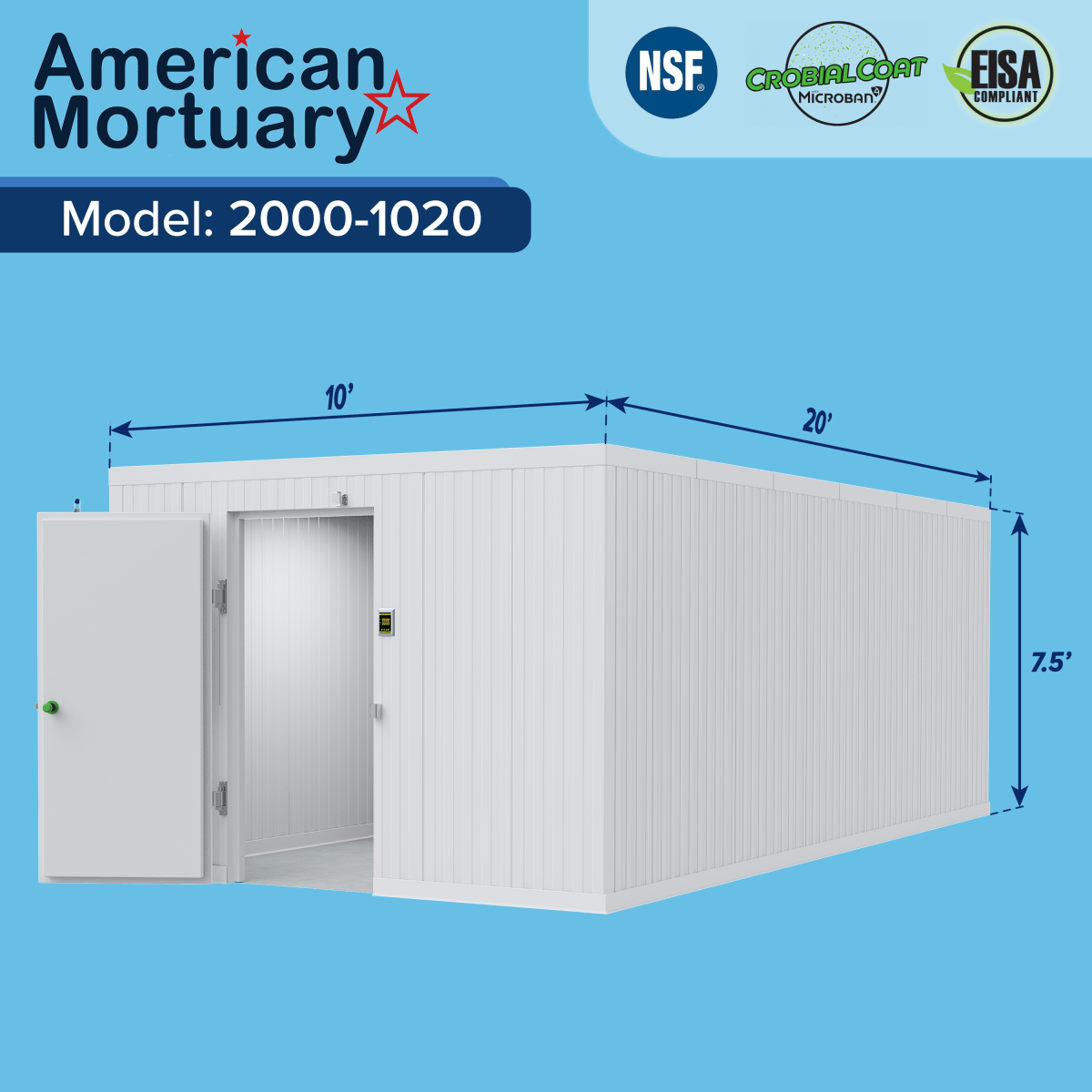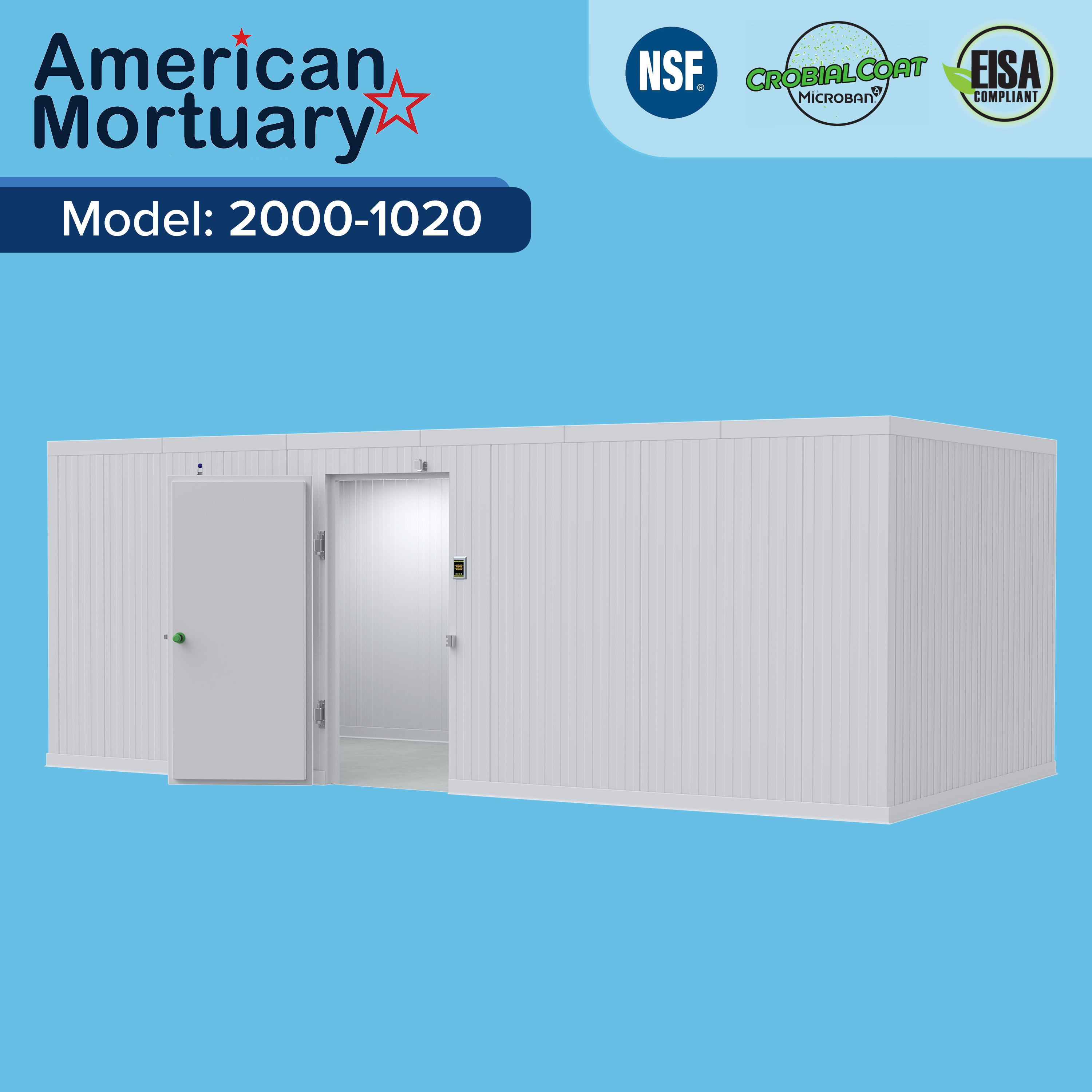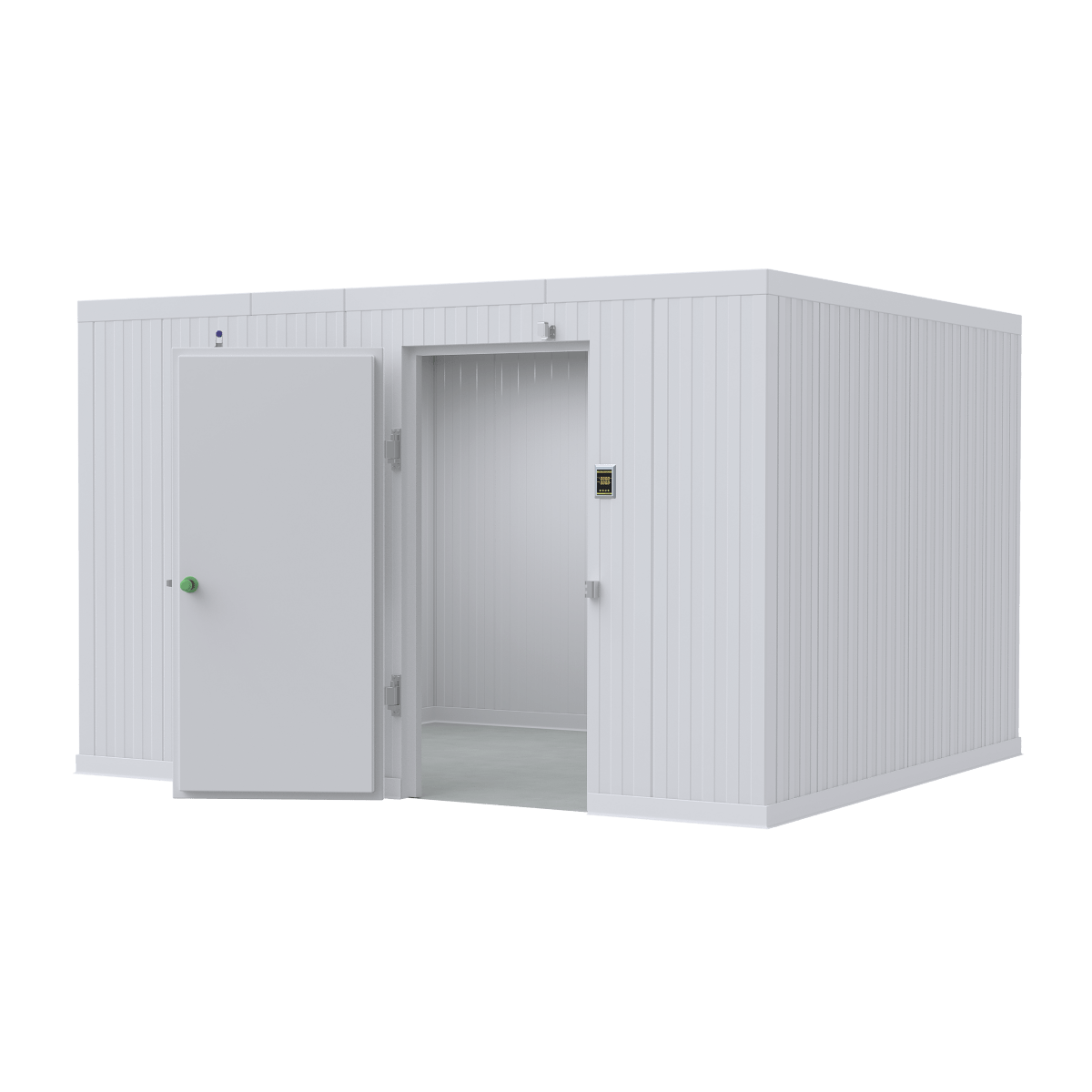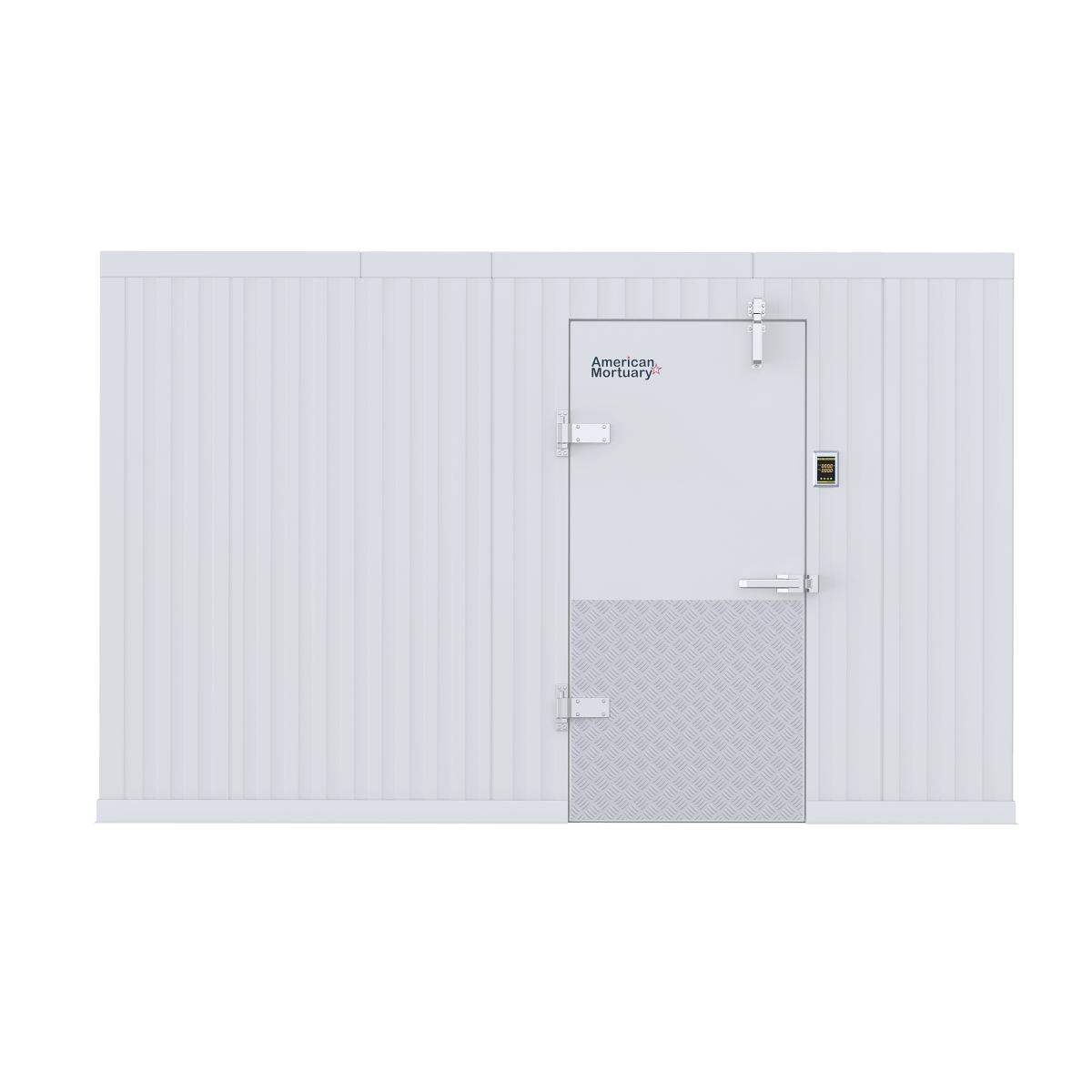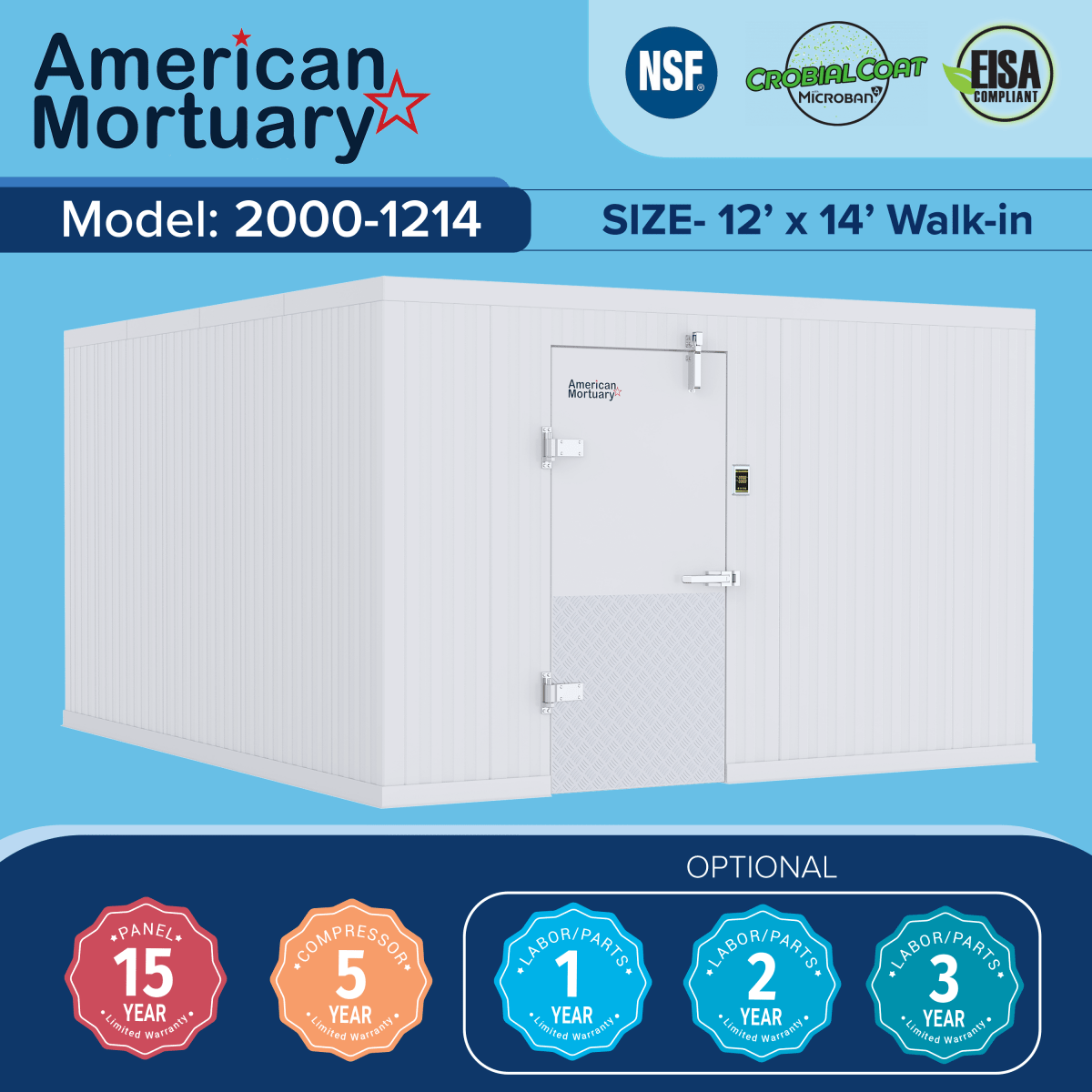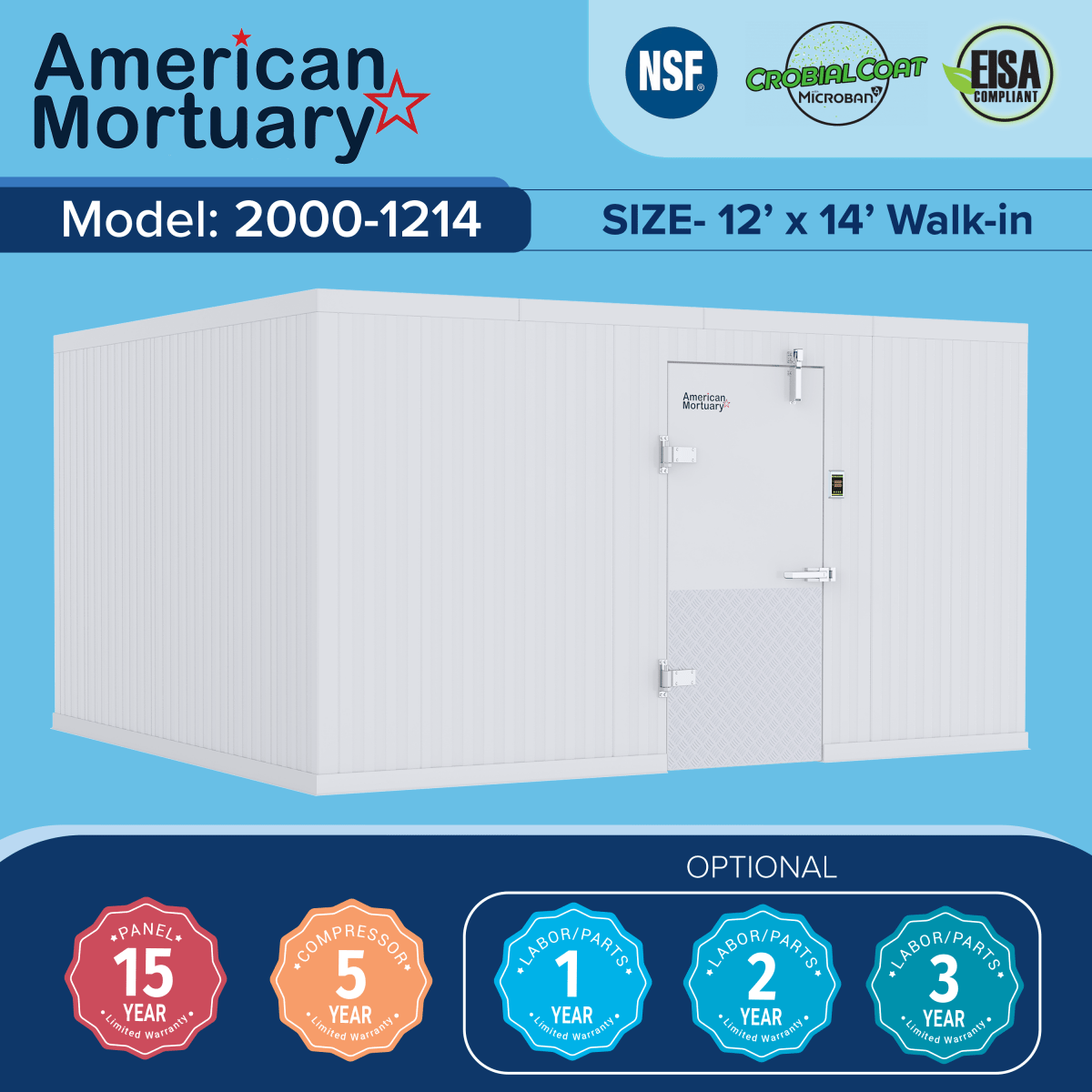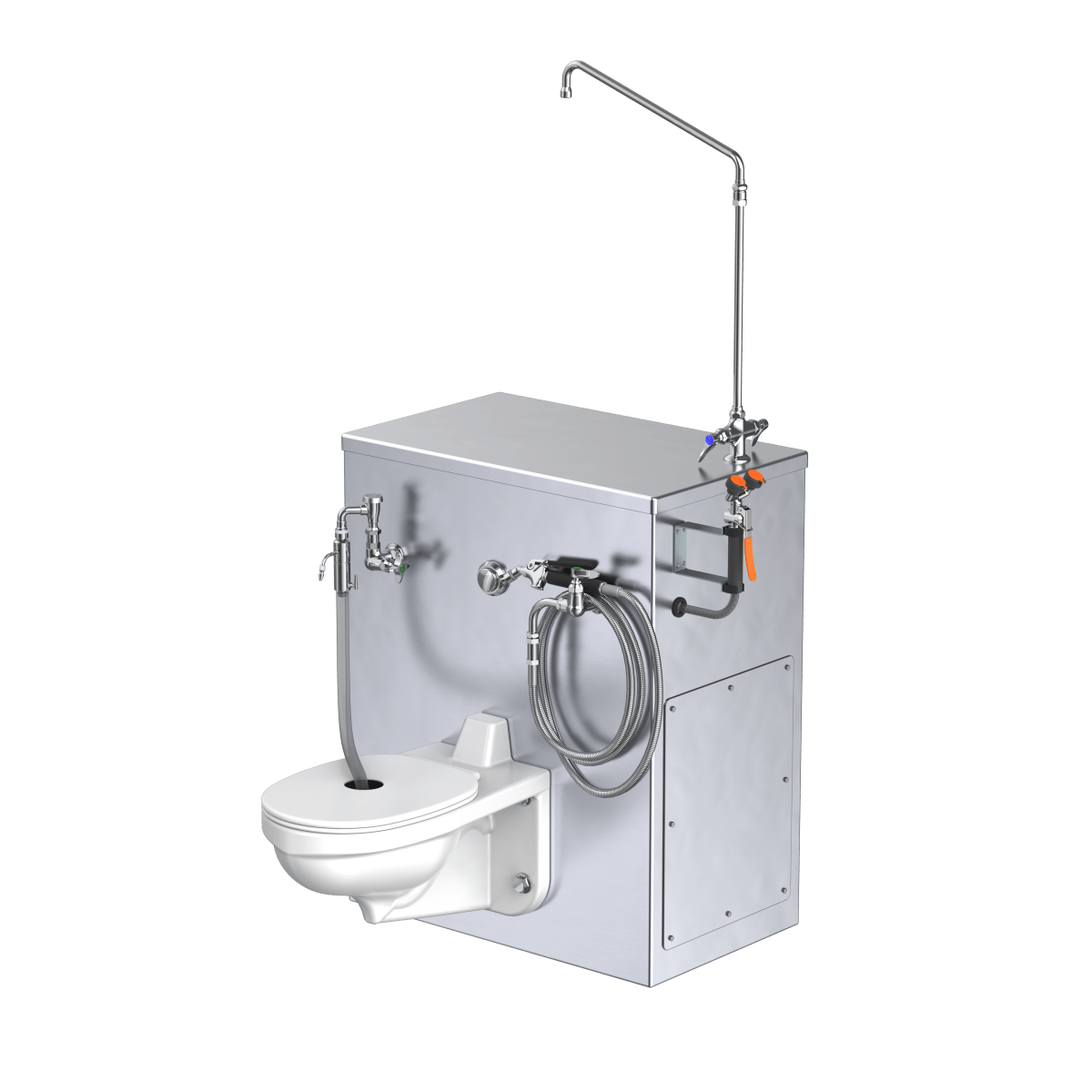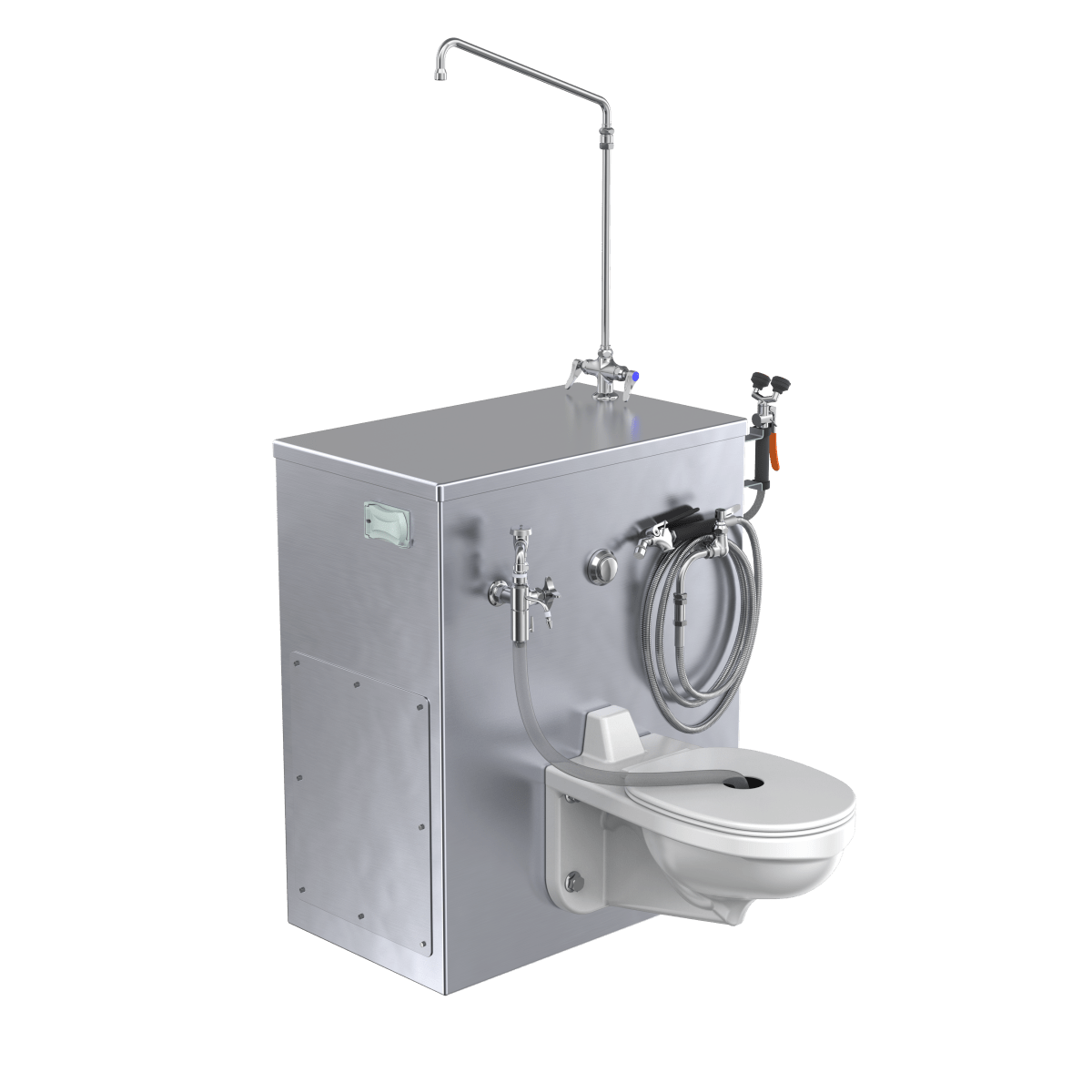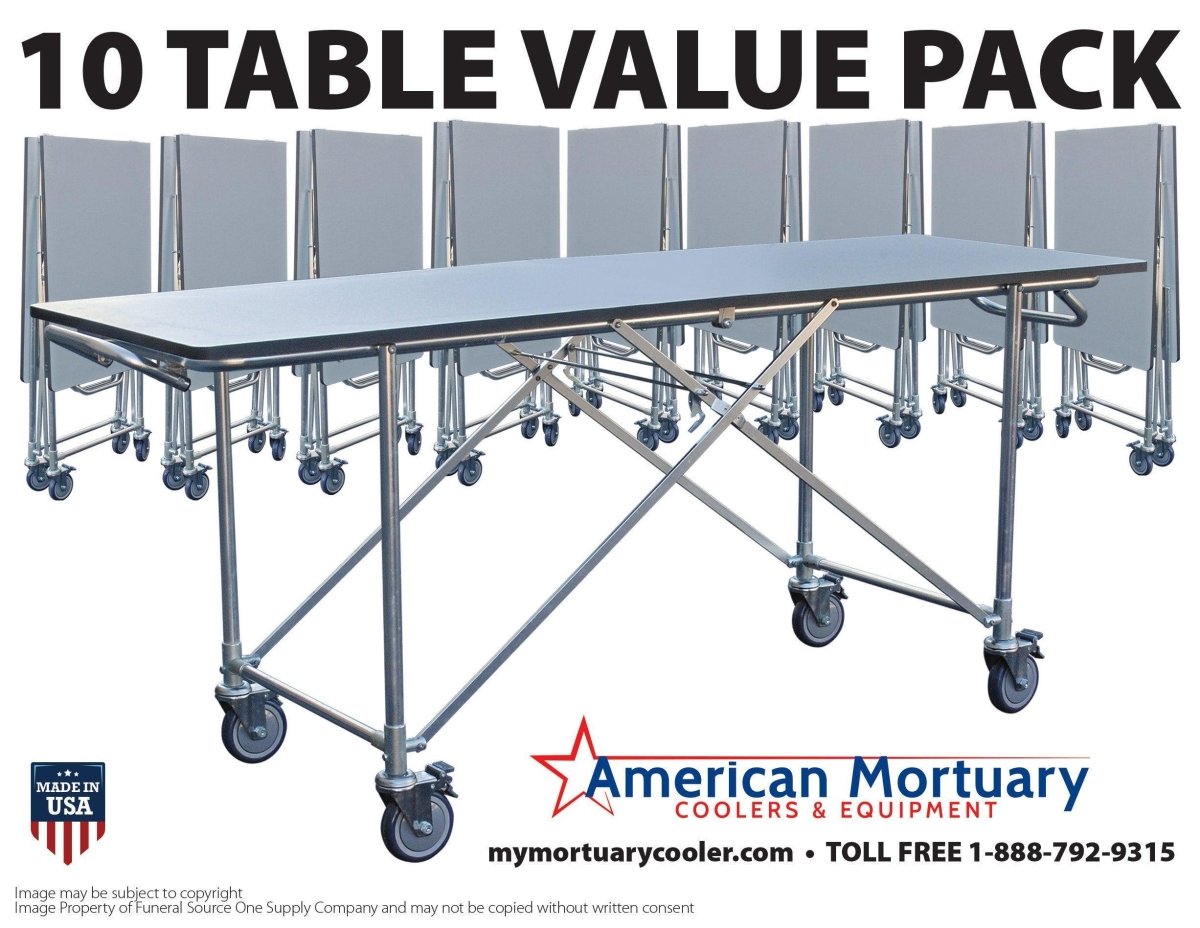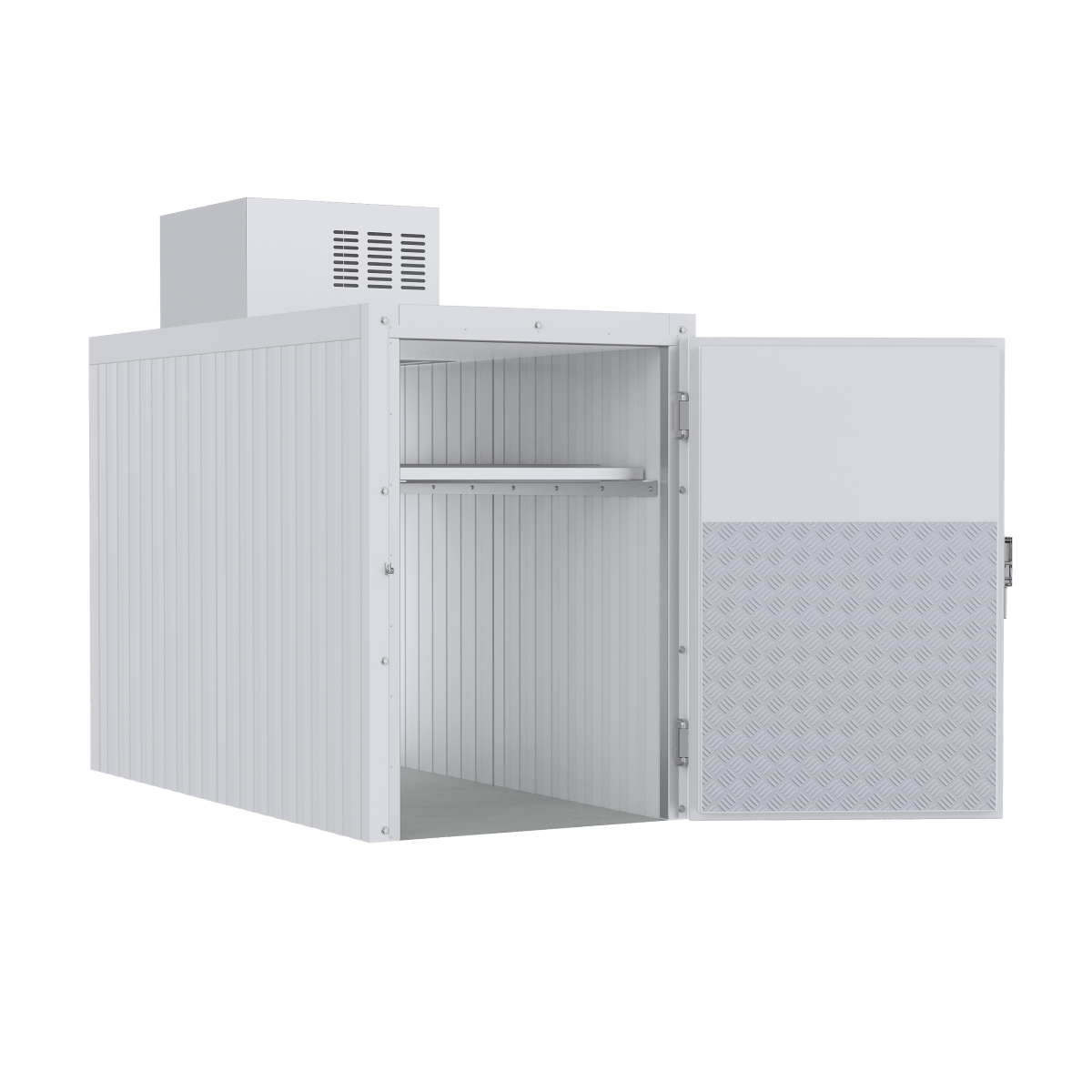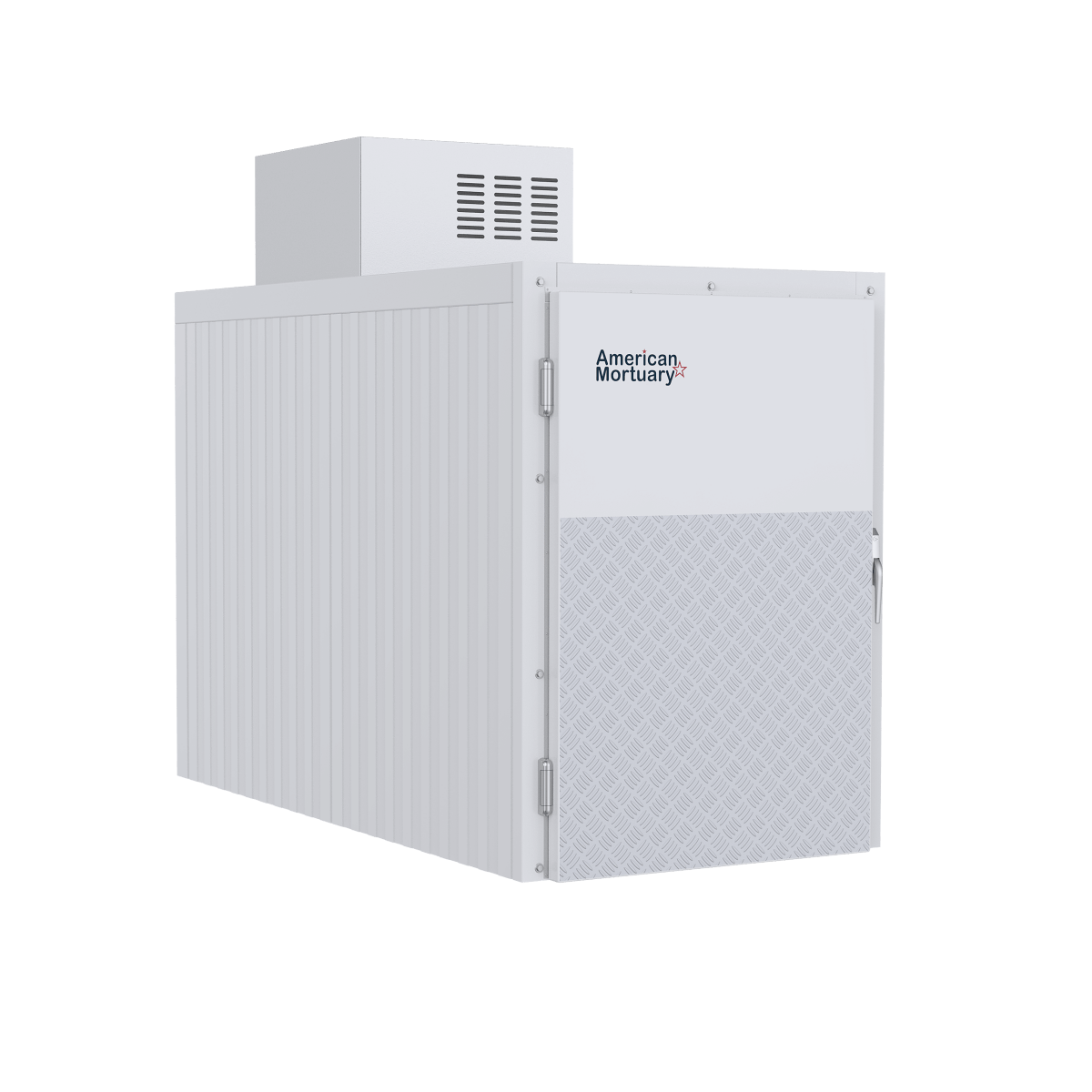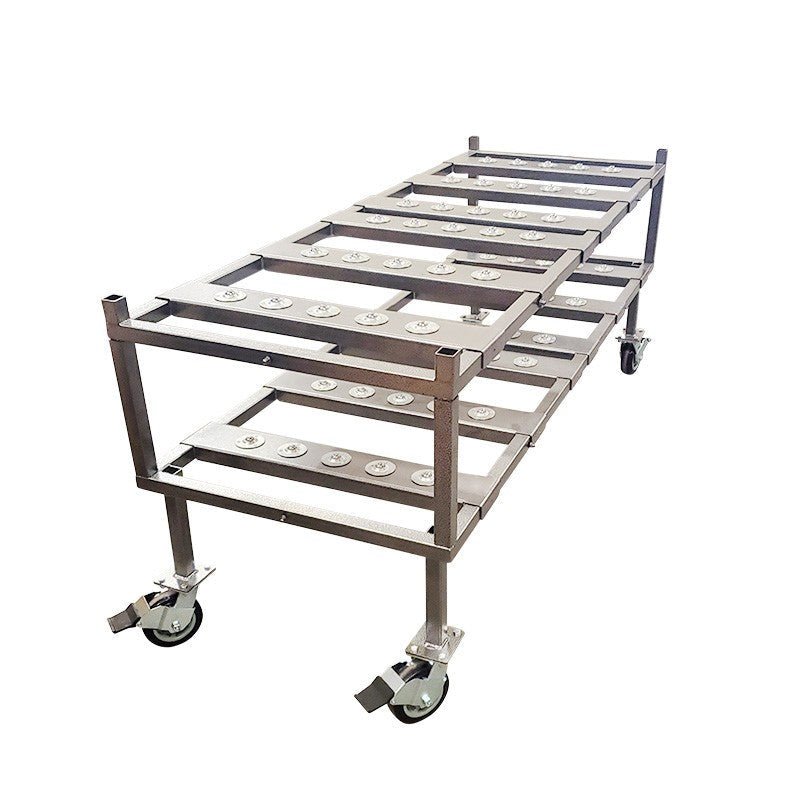Understanding Modern Cremation Technology
Have you ever wondered what happens behind the scenes during the cremation process? Let me walk you through it with the clarity you deserve.
A cremation machine isn't just equipment—it's a carefully engineered system that provides families with closure during difficult times. These specialized units (sometimes called retorts or cremators) transform human or animal remains into bone fragments through controlled heat and combustion.
When you're researching options for your funeral home, here's what matters most: These machines operate at temperatures between 1,400°F and 1,800°F, converting organic material to inorganic bone fragments. After the primary process, these fragments move to a device called a cremulator, which creates the fine consistency that families receive as "ashes."
Today's cremation machines have come a long way from their predecessors. Modern units feature intuitive touchscreen controls, smart PLC automation, and even remote diagnostic capabilities that minimize downtime. Some high-efficiency models can complete a full cycle in just 45-60 minutes—perfect for busier operations.
When selecting the right system for your facility, you'll need to consider your case volume, available space, utility requirements, and budget. With standard models ranging from $43,500 to $58,000 and expected service lives of 15-20 years, this represents a significant but worthwhile investment in your business's future.
Here at American Mortuary Coolers, we've worked alongside countless cremation installations nationwide, providing the complementary cooling systems that create complete facility solutions. Our team understands how these systems integrate and can help you design a setup that works seamlessly together.

Looking to expand your knowledge? Check out these related resources:
Why This Guide Matters
I've watched the cremation industry transform over recent years. What was once an alternative option has now become the preferred choice for many families across America. The numbers tell the story—cremation rates now exceed burial rates in many regions, according to the Cremation Association of North America (CANA), which represents over 1,500 industry professionals.
This shift brings new responsibilities for funeral directors like you. A cremation machine isn't just another piece of equipment—it's the heart of your cremation service offering. Your choice impacts everything from daily operations and environmental compliance to the quality of service families receive during their most vulnerable moments.
I created this guide to help you steer these waters with confidence. Whether you're upgrading existing equipment or adding cremation services for the first time, understanding the technology behind these machines will help you make choices aligned with your business needs, regulatory requirements, and budget realities.
The decisions you make today about cremation equipment will serve your business and your community for decades to come. Let's make sure they're the right ones.
What Is a Cremation Machine & How Does It Work?
When you hear the term cremation machine, what comes to mind? At its heart, this specialized equipment respectfully transforms human or animal remains through controlled heat and combustion. Think of it as a dignified final journey for loved ones who have passed.
The technology behind these machines is both fascinating and thoughtfully designed. Every cremation machine contains several vital components working together:
The primary chamber serves as the main area where remains rest during the process. Surrounding this is the secondary chamber, which plays a crucial role in ensuring complete combustion of gases. The afterburner kicks temperatures up to 1,600°F-1,800°F, making sure nothing remains incomplete.
Overseeing everything is the PLC (Programmable Logic Controller) - essentially the machine's brain, monitoring temperatures, timing, and safety features. All of this is protected by specialized refractory lining, incredible materials that can withstand extreme heat while maintaining the chamber's integrity.

Most cremation machines today run on natural gas or propane, though more facilities are exploring electric options as technology advances. Depending on the model and the person's size, a complete cycle typically takes between 45 minutes (in high-efficiency units) to 150 minutes in standard models.
The Cremation Machine Process Step-by-Step
The journey through a cremation machine follows a respectful, carefully controlled path. It begins with preparation, where the deceased is placed in a combustible container before being gently loaded into the primary chamber.
Once properly positioned, the ignition phase begins. Modern machines use sophisticated flame safeguard systems that ensure proper, consistent heating. As temperatures climb to between 1,400°F-1,600°F, the primary combustion begins, and organic materials start to vaporize.
The secondary combustion phase is where environmental responsibility comes in. All gases and particles from the primary chamber flow into the secondary chamber, where even higher temperatures of 1,600°F-1,800°F ensure complete combustion, significantly reducing emissions.
Throughout this process, emission control systems continuously monitor opacity (essentially smoke density) and adjust airflow to maintain the cleanest possible operation. When cremation completes, a cooling period follows before the remains are carefully removed.
The final step involves processing the bone fragments in a specialized device called a cremulator, creating the uniform consistency that families receive. Our article on Cremation Equipment 101: Tools of the Trade dives deeper into this entire process and the equipment involved.
Key Components You'll Touch
For those operating a cremation machine, several components become part of your daily routine:
The burners in modern units feature sophisticated modulation capabilities, giving operators precise temperature control that improves both efficiency and emission management. The refractory lining is truly an engineering marvel – specialized ceramics that withstand temperatures up to 3,000°F while protecting the outer structure.
Every cremation machine relies on blower systems that provide the necessary air for proper combustion while helping control the entire process. The opacity monitor serves as your environmental conscience, measuring smoke density in the exhaust to ensure you're meeting all regulations.
Finally, there's the cremulator – as described in scientific research on cremulator function, this specialized device "grinds the bone fragments that remain after cremation or aquamation into fine powder." The Guardian newspaper eloquently described it in 1989 as "a machine called a cremulator [that] reduces the fragments of bone to a fine ash."
At American Mortuary Coolers, we understand how these components work together as a system. That's why we design our complementary cooling equipment to integrate seamlessly with your cremation machine, ensuring your entire operation maintains dignity, efficiency, and compliance from start to finish.
Main Types & Applications of Cremation Machines
When it comes to end-of-life care, different needs call for different solutions. The cremation industry has evolved to offer specialized equipment designed with specific purposes in mind, each with features custom to unique applications.

Human Cremation Machines
The heart of any funeral home offering cremation services is the human cremation machine, often called a retort. These units are built with dignity and efficiency in mind, designed to handle the sacred task of caring for loved ones at the end of their journey.
Modern human cremation machines feature impressive capabilities, accommodating remains up to 750-1,200 pounds. They're constructed with longevity in mind – quality units from manufacturers like B&L and US Cremation Equipment are built to withstand thousands of cremation cycles over many years of service.
Today's models come equipped with user-friendly touchscreen interfaces that guide operators through automatic sequencing, making the process both respectful and efficient. The Phoenix II-3, for example, can complete a cremation cycle in just 45-60 minutes with its 1,000-pound load capacity – perfect for busier funeral homes with higher case volumes.
For facilities handling larger cases, the CFS 2300 Human Chamber from Cremation Systems offers a thoughtful recessed hot hearth design that accommodates remains over 750 pounds. Its innovative Quick Change Hearth system is a real time-saver, allowing installation and operation readiness in a single day – something your installation team will certainly appreciate.
Animal Cremation Machines
As our relationships with pets have deepened, so has the need for dignified pet cremation services. Animal cremation machines serve a variety of facilities including dedicated pet crematories, veterinary clinics, humane societies, and animal control facilities.
These specialized units come in various sizes to accommodate everything from small companion animals to larger livestock. The Sierra series offers options ranging from the compact Sierra-300 with its 75 pounds per hour capacity, perfect for smaller pets, all the way up to the robust Sierra-1200 that can process up to 400 pounds per hour – ideal for high-volume operations.
One of the most thoughtful innovations in this field comes from B&L Cremation Systems, who pioneered multi-door animal crematories. These special units allow separate processing of multiple animals simultaneously – an essential feature for facilities promising private, individual cremation services to grieving pet owners who want assurance their beloved companion's remains will be returned to them without mixing.
Medical Waste & Pathological Units
Healthcare facilities face unique challenges when it comes to disposing of medical and pathological waste. Specialized medical waste incinerators – a type of cremation machine – provide safe, compliant solutions for handling sensitive materials including tissues, organs, body parts, biological waste, and pharmaceutical products.
These units operate differently than standard cremation machines. Many models, like the BLI 5000 MW, offer continuous feed capability, processing up to 350 pounds per hour without interruption. They typically run at higher temperatures (1,800°F-2,000°F) to ensure complete destruction of pathogens, and incorporate more robust filtration systems to safely handle potentially hazardous materials.
B&L Cremation Systems offers several options in this category, ranging from the compact BLI 400 MW with its 23 cubic foot primary chamber up to the industrial-grade BLI 2500 MW featuring a 170 cubic foot chamber and impressive 250 pound per hour rating.
For facilities looking toward more environmentally friendly alternatives, water-based cremation (also known as aquamation or alkaline hydrolysis) is gaining popularity. The FC-600 Fireless Cremation Unit uses a gentle combination of water and alkaline chemicals rather than flame, significantly reducing emissions while still providing complete reduction of remains.
At American Mortuary Coolers, we understand that selecting the right cremation machine is just one part of creating an efficient, dignified facility. Our custom mortuary coolers are designed to work seamlessly alongside any cremation equipment you choose, creating a complete workflow solution for your unique needs.
Performance & Capacity: Low, Medium, High-Volume Systems
Choosing the right cremation machine is a bit like finding the perfect vehicle - you need one that matches your daily needs without breaking the bank. Let's look at how these machines stack up across different performance levels:
| Model Class | Example Models | Load Capacity | Burn Rate | Cycle Time | Best For |
|---|---|---|---|---|---|
| Low Volume | B&L N-20SA | 750+ lbs | 100-150 lbs/hr | 150+ min | Small funeral homes, <300 cases/year |
| Medium Volume | US Classic-PRO, B&L N-20AA | 800-1,000 lbs | 150-250 lbs/hr | 90-120 min | Mid-size operations, 300-600 cases/year |
| High Volume | Phoenix II-3, Classic-XCEL | 1,000-1,200 lbs | 300-400 lbs/hr | 45-70 min | Large facilities, 600+ cases/year |
Understanding Burn Rates & Cycle Times
When funeral directors talk shop about cremation machines, cycle time is often the first thing mentioned. It's the heartbeat of your operation, determining how many families you can serve each day.
Those high-volume powerhouses like the Phoenix II-3 can complete a full cremation in just 45-60 minutes. That's nearly as quick as some people's lunch breaks! These speed demons process up to 400 pounds per hour thanks to advanced hot hearth designs and burners with enough BTUs to impress even the most technical-minded folks.
Medium-volume systems strike a nice balance for many funeral homes. The B&L N-20AA takes about 100-120 minutes per cremation, while the Classic-PRO from US Cremation Equipment averages around 90 minutes. These workhorses offer reliability without the premium price tag of their speedier cousins.
For smaller operations, low-volume systems like the B&L N-20SA, with their 150-minute average cycle times, provide an economical entry point. They may take longer, but for facilities handling fewer than 300 cases yearly, they're often just right.
I remember speaking with a funeral director in Memphis who told me, "We started with a low-volume system but quickly upgraded as our case volume grew. The difference in throughput meant we could handle twice the cases without adding a second shift." His experience mirrors what many of our customers find as their businesses evolve.
Choosing a Cremation Machine Size
Finding your perfect match in a cremation machine comes down to honest assessment of several factors:
First, take a clear-eyed look at your case volume, both current and where you expect to be in 3-5 years. If you're handling fewer than 300 cremations annually, a low-volume system might be your sweet spot. Between 300-600 cases? Medium-volume systems offer that "just right" balance. For busy operations exceeding 600 cases yearly, high-volume systems quickly pay for themselves through efficiency.
Your operating schedule matters too. If you're running a single shift, you might need more machine muscle than a facility operating around the clock. It's simple math – fewer operating hours means you need more efficiency during those hours.
Don't forget about physical space constraints. High-volume systems like the CFS 2300 stand 7'7½" tall, stretch 5'3" wide, and require 15'4" of length – plus additional clearance for loading and maintenance. Measure twice, purchase once!
Budget considerations extend beyond the sticker price. While high-volume systems cost more upfront, they often deliver better economics long-term for busy facilities. Our article on The Real Cost of Cremation Machines Revealed digs deeper into total ownership costs that many overlook during the buying process.
Here at American Mortuary Coolers, we've helped funeral homes across the country pair the right cooling systems with their cremation equipment. We understand that these machines represent the heart of your operation, and the surrounding infrastructure needs to keep pace with your capacity needs.
Environmental, Safety & Regulatory Essentials
Running a cremation machine isn't just about the technical operation—it's about navigating a maze of regulations while keeping everyone safe and respecting our environment. Let's break down what you really need to know.
Emissions and Regulatory Compliance
When I visit crematories across the country, operators often tell me that understanding compliance is their biggest headache. Here's the straightforward truth:
Your cremation machine needs to maintain secondary chamber temperatures between 1,600°F and 1,800°F—this isn't just a recommendation, it's essential for complete combustion that eliminates most pollutants. Most regulations require gases to stay in this hot zone for at least 1-2 seconds to ensure everything breaks down properly.
EPA regulations vary by state (which can be frustrating), but they typically focus on limiting visible emissions and specific pollutants. One often-overlooked detail is stack height—the EPA recommends following what they call the "Good Engineering Practice" formula (H + 1.5L), with minimum heights between 23-49 feet to ensure proper dispersion.
When shopping for equipment, look for the UL (Underwriters Laboratories) listing—this isn't just a fancy sticker, it's verification that your cremation machine meets safety and performance standards. The Cremation Association of North America (CANA) also provides excellent guidelines worth following.
I've been impressed with how companies like MacroBurn use computational fluid dynamics to optimize their chamber designs. This isn't just technical jargon—it means better thermal mixing, more complete combustion, and ultimately fewer emissions coming from your stack.
Fuel Efficiency & Alternative Energy
Let's talk about keeping your operation efficient and forward-thinking:
Most cremation machines still run on natural gas or propane, and there are good reasons for this. However, electric options are emerging for facilities looking to reduce their carbon footprint. We explore the honest pros and cons in our article From Gas to Electric: Navigating Cremation Furnaces.
Some fascinating innovations are making traditional systems more efficient. Recirculated combustion air systems heat incoming air to 200-250°C, which significantly reduces emissions. Pre-heated combustion air (pushing 250-300°C) takes this even further. And don't overlook the importance of good insulation—low R-value refractory materials (1.54 m²K/W) can dramatically cut your operating costs.
Water cremation, also called alkaline hydrolysis, deserves serious consideration. The FC-600 Fireless Cremation Unit uses water and alkaline chemicals instead of flame. While not available everywhere due to regulations, it produces significantly lower carbon emissions and is gaining acceptance as a greener alternative.
Keeping Operators & Communities Safe
Safety isn't just about following rules—it's about protecting the people who make your business possible:
Modern cremation machines include critical safety features like flame safeguard systems with ultraviolet detectors that monitor each burner constantly. Safety interlocks prevent operation if conditions aren't right, and automated door mechanisms reduce physical strain on your team. Touchscreen controls aren't just fancy tech—they keep operators at a safe distance during the process.
Don't skimp on training. Operator certification isn't just a box to check—it's essential knowledge that prevents accidents. Most manufacturers offer comprehensive training programs, and annual recertification keeps skills sharp. As one crematory manager in Atlanta told me, "The training isn't just about following procedures; it's about understanding why those procedures exist."
Your community's trust matters too. Opacity sensors monitor smoke density in real-time, and automated alarms give operators a chance to adjust parameters before problems become visible to neighbors. Thoughtful planning of stack height and location minimizes impact on surrounding areas.
At American Mortuary Coolers, we apply these same principles when designing cooling systems that complement your cremation machine. We believe your entire facility should work together seamlessly while meeting or exceeding every regulatory requirement.

Installation, Maintenance & Accessory Ecosystem
Installing a cremation machine is a complex project requiring careful planning and coordination.
Installation and Site Preparation
A successful cremation machine installation requires:
Site Preparation:
- Reinforced concrete pad capable of supporting 24,000-34,000 lbs (shipping weight of most units)
- Proper clearances for loading, operation, and maintenance
- Ventilation planning and stack installation
- Gas line sizing (typically 2,350 CFH at 7" w.c. for natural gas or 940 CFH at 11" w.c. for propane)
- Electrical service (typically 240V, 1 phase, 40A)
Permitting:
- Air quality permits from local environmental agencies
- Building permits for construction and modifications
- Zoning approvals for crematory operations
Installation Timeline:
- Traditional installations require 3-7 days plus curing time
- Innovative systems like the CFS 2300 with Quick Change Hearth can be installed and operational in a single day
Maintenance Requirements:
- Annual tune-ups to maintain optimal performance
- Refractory inspections and repairs as needed
- Burner maintenance and calibration
- Control system updates and verification
The Cremation Systems CFS 2300 features a Quick Change modular hearth that allows for complete hearth replacement in one day without curing or dry-out cycles, dramatically reducing downtime compared to traditional systems that might require a week or more for repairs.
Accessory Products That Complete Your Cremation Machine
A cremation machine is the centerpiece of a crematory, but several accessory products are essential for efficient operation:
Loading Systems:
- Electric Hydraulic Lift Table US1000-HLB: Safely raises and positions remains for loading
- Manual Hydraulic Lift Table US1000-HL: More economical option for lower-volume facilities
- Hydraulic Lift & Scale US1000-HLBS: Combines lifting function with integrated weighing
Remains Processing:
- Cremated Remains Processor US 30SSP: Processes bone fragments into fine consistency
- Ventless Processing Station 300PS: Contains dust during processing without requiring dedicated ventilation
- Ventless Packaging Center: Clean workspace for transferring processed remains to urns
Temporary Storage:
- Mortuary Cooler Model US-3B: Provides temperature-controlled storage before cremation
- Mobile Receiving Station: Facilitates transfer and temporary holding of remains
These accessories are available through our Cremation / Ship Outs list and can be customized to match your specific cremation machine and facility layout.
At American Mortuary Coolers, we specialize in designing and manufacturing mortuary coolers that integrate seamlessly with your cremation workflow, ensuring proper temperature control and dignified storage of remains awaiting cremation.
Future-Proof Tech & Remote Diagnostics
Modern cremation machine technology includes advanced features that improve efficiency and reduce downtime:
Touchscreen Controls:
- Intuitive interfaces replace traditional analog controls
- Step-by-step process guidance for operators
- Data logging and reporting capabilities
- Available as upgrades for both Phoenix and N-20 series crematories
Remote Diagnostics:
- Tek Marshal internet diagnostics allow technicians to troubleshoot issues remotely
- Reduces need for on-site service calls
- Faster resolution of technical problems
- Real-time monitoring of operating parameters
IoT Integration:
- Some newer models connect to facility management systems
- Automated maintenance alerts based on operating hours
- Performance data collection for optimization
Predictive Maintenance:
- Advanced systems monitor component wear patterns
- Scheduled maintenance based on actual usage rather than calendar
- Reduced unexpected downtime
For more information about these advanced features, see our article on More info about quick-change hearths.

Frequently Asked Questions about Cremation Machines
How long does one cremation take in a modern cremation machine?
When families ask about cremation timeframes, the answer isn't one-size-fits-all. The time needed varies quite a bit depending on the equipment you're using and who you're serving.
High-volume systems like the Phoenix II-3 and Classic-XCEL can complete a cremation in just 45-60 minutes – almost as quick as your lunch break. Medium-range models like the N-20AA and Classic-PRO take a bit longer at 90-120 minutes, while entry-level systems might need 150 minutes or more.
What makes the difference? Several things come into play. The size and weight of the person matters significantly – larger individuals naturally require more processing time. The container type affects timing too, with some materials burning more efficiently than others. Your cremation machine's BTU rating essentially determines its "horsepower," while the condition of your refractory lining (that special heat-resistant material inside) can either help or hinder heat efficiency.
I recently spoke with a crematory manager in Dallas who told me, "We upgraded from a standard unit to a high-efficiency model and cut our average cremation time in half. The fuel savings alone justified the investment within two years." That's the kind of practical insight that helps when making these significant decisions.
What affects the fuel cost per cremation?
Fuel costs can eat into your bottom line if you're not careful. Understanding what drives these costs helps you manage them effectively.
Your cremation machine's efficiency makes a huge difference. Newer models with better insulation and advanced burner technology simply use less fuel. Some innovative systems recirculate combustion air, essentially pre-heating the incoming air and saving considerable energy. And don't underestimate good old-fashioned maintenance – well-maintained refractory lining keeps heat where it belongs, inside the chamber.
Smart scheduling pays dividends too. Back-to-back cremations are much more fuel-efficient since you're starting with an already hot chamber. That's why high-volume facilities generally enjoy lower per-case fuel costs – they're keeping their equipment running consistently rather than heating up and cooling down repeatedly.
The type of fuel matters as well. Natural gas typically costs less than propane, though rates vary significantly depending on where you're located. Some forward-thinking facilities are exploring renewable energy options to stabilize their long-term costs.
For perspective, a well-maintained modern cremation machine operating efficiently might use 1,500-2,000 cubic feet of natural gas per cremation – though your actual consumption will depend on all these factors working together.
Do cremation machines smell or emit visible smoke?
This question comes up frequently from both families and community members. The good news is that properly operated modern cremation machines should run with minimal odor and no visible emissions.
Today's equipment features sophisticated emission control technology. The secondary chamber maintains temperatures between 1,600°F-1,800°F – hot enough to completely combust gases and particles that might otherwise cause odors or visible smoke. These systems hold gases in the secondary chamber for 1-2 seconds, ensuring complete combustion before anything leaves the stack.
Proper stack height matters too. Following the EPA's recommended formula (H + 1.5L) ensures adequate dispersion of any remaining exhaust. Some facilities take extra precautions by installing additional scrubbers or filters, particularly in densely populated areas.
When problems do occur, they're usually traceable to specific issues: overloading the chamber beyond its rated capacity, insufficient warm-up time, burner malfunctions, deteriorated refractory lining, or ventilation problems. Each of these has straightforward solutions through proper maintenance and operation.
The bottom line? A well-maintained, properly operated cremation machine should be a good neighbor, operating quietly without creating noticeable emissions. If you're experiencing otherwise, it's time to call in a technician – something might need attention.
Conclusion
Choosing the right cremation machine might feel overwhelming, but it's a decision that touches every aspect of your crematory operation. Whether you're looking at high-volume systems that complete cremations in under an hour or specialized units for animal remains, today's market offers solutions for every need and budget.
Here at American Mortuary Coolers, we've worked alongside countless crematory installations, and we've learned something important: a cremation machine works best when it's part of a thoughtfully designed facility. Our custom mortuary coolers aren't just add-ons – they're essential partners to your cremation system, providing dignified, temperature-controlled storage that preserves remains with care until cremation.
We're proud to serve crematory operations across America, with direct delivery throughout the contiguous 48 states from our locations in Johnson City TN, Atlanta GA, Chicago IL, Columbia SC, Dallas TX, Los Angeles, New York NY, Pittsburgh PA, and regional centers nationwide. When you need support, we're never far away.
As you plan your next steps, consider taking this practical approach:
- Take a clear-eyed look at your volume needs – not just today's case load, but where you expect to be in five years
- Measure your available space and check your utility capabilities (that 2-inch gas line might make all the difference!)
- Sit down with your local regulators to understand the specific requirements in your jurisdiction
- Look beyond the sticker price to the true cost of ownership – efficiency saves money every single day
- Don't forget to plan for complementary equipment like mortuary coolers that keep your operation flowing smoothly
"We thought we just needed a cremator," one funeral director in Ohio told me recently. "But it was the cooling system that actually solved our biggest workflow problems."
For crematory operators looking to create a seamless operation, our team is ready to design cooling solutions that work hand-in-glove with your chosen cremation machine. Learn more about our approach at Your one-stop shop for mortuary coolers.
With thoughtful planning and the right equipment partnerships, your crematory can provide families with service that's dignified, efficient, and environmentally responsible for years to come. And in this business, that's what truly matters.


